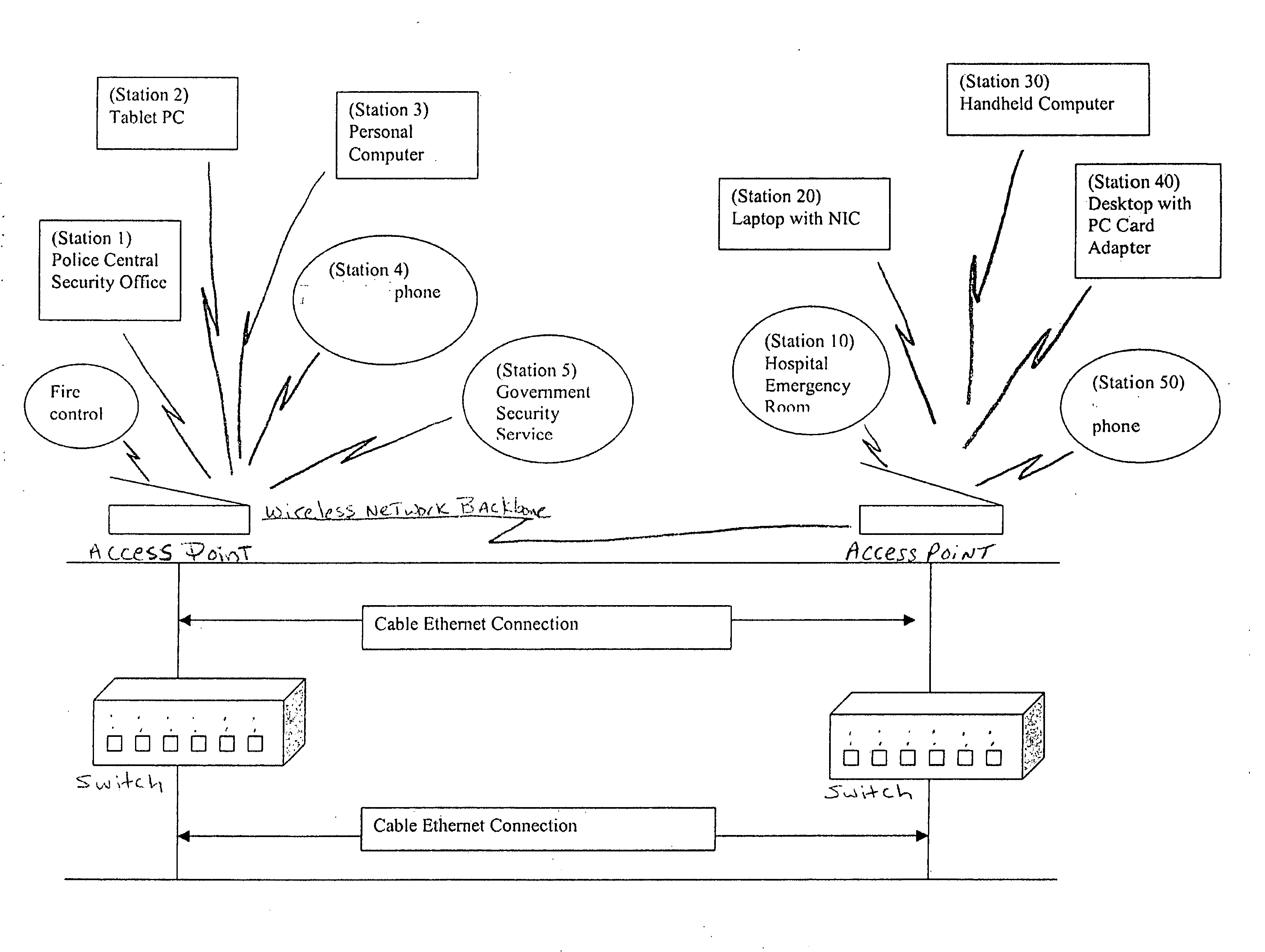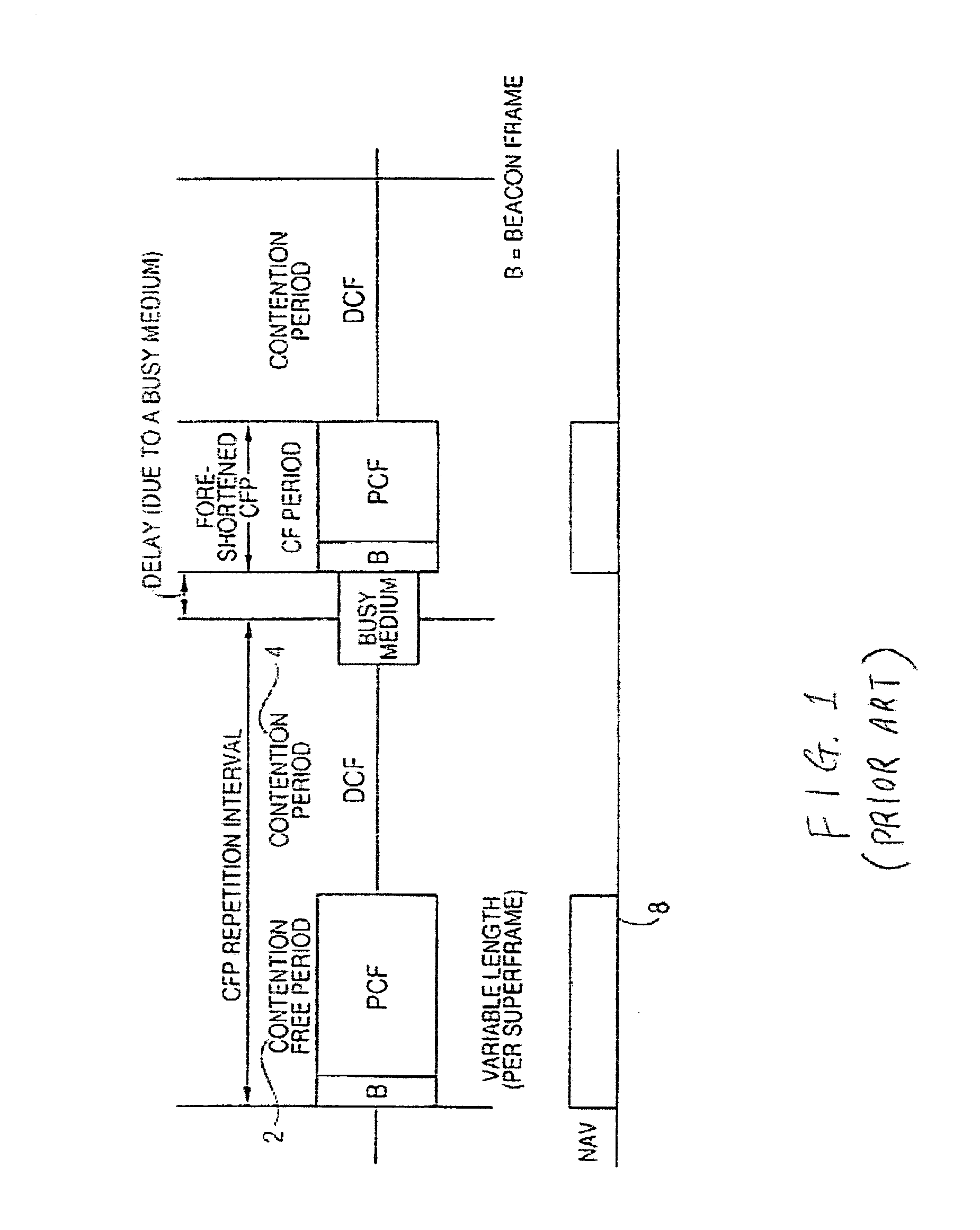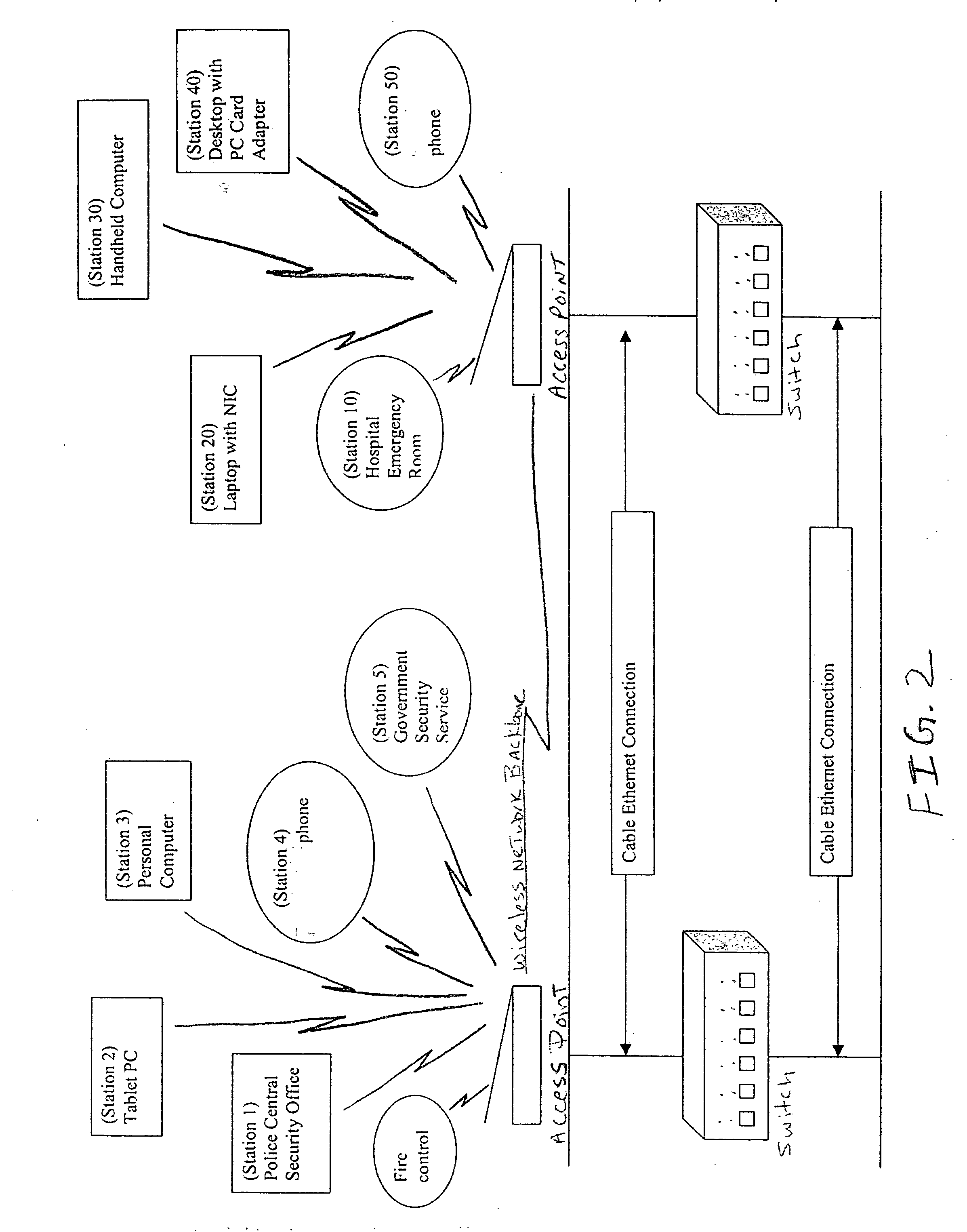Methods and systems for providing priority access to 802.11 endpoints using DCF protocol
- Summary
- Abstract
- Description
- Claims
- Application Information
AI Technical Summary
Benefits of technology
Problems solved by technology
Method used
Image
Examples
case 2
[0039] Algorithm P identifies a frame that is transmitted without back-off and uses that frame as a reference for scheduling invitation windows w for subsequent frames without any collision. In one embodiment, the formula Δ=PIFS+TCTS+w is used to denote the width of the invitation window in the steady state, including the time to transmit the CTS frame. Note that the duration field of the CTS excludes PIFS and TCTS. Referring now to FIGS. 4 and 5, Algorithm P functions as follows: [0040] Step 1 As soon as a SIP OK to an endpoint is observed, signaling the successful completion of call establishment, start protecting the medium by transmitting CTS frames to that endpoint. The duration of the CTS is set to cover the free periods between already scheduled invitations to other voice terminals and is divided into windows of width≦PIFS+TCTS+DIFS+CWmin·tslot. Continue this protection until the first media frame from the endpoint is observed. Set Tsched to be the end of the immediately prec...
PUM
 Login to View More
Login to View More Abstract
Description
Claims
Application Information
 Login to View More
Login to View More - R&D
- Intellectual Property
- Life Sciences
- Materials
- Tech Scout
- Unparalleled Data Quality
- Higher Quality Content
- 60% Fewer Hallucinations
Browse by: Latest US Patents, China's latest patents, Technical Efficacy Thesaurus, Application Domain, Technology Topic, Popular Technical Reports.
© 2025 PatSnap. All rights reserved.Legal|Privacy policy|Modern Slavery Act Transparency Statement|Sitemap|About US| Contact US: help@patsnap.com



